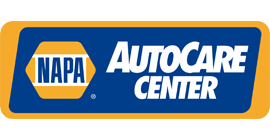
Archive for October 2020Some New Boots (Suspension Maintenance)Posted October 25, 2020 7:09 AMThere are some boots that don't come in a shoe box and aren't worn on your feet. They are called axle or CV boots, and they can be important parts for many vehicles. That CV stands for constant velocity. CV axles are mainly used in front-wheel drive and all-wheel drive vehicles. They're also used in some rear-wheel drive vehicles with independent suspensions. They have two CV joints, one inner and one outer, placed between the axle and the drive wheels. That way the vehicle's engine power can drive the wheels, no matter what angle they are. They also adjust for the different speeds wheels turn as they go around corners. Because roads are full of all sorts of hazards (dirt, oil, water, grime), these CV joints need to be protected. They also have grease in them to keep the bearings moving smoothly. That's the job of the rubber boots that are supposed to keep that debris out. These CV or axle boots are made of rubber or plastic and usually last a long time without any problem. But sometimes they fail, either from being hit by debris or age causing the rubber or plastic to deteriorate. That can allow the grease to leak out of the joint and the moisture to get in. And that's where the trouble is. So it's important to have a vehicle's CV boots checked periodically, especially when they begin to have more than 100,000 miles/160,000 kilometers on them. A technician inspects them for tears or cracks. Sometimes if the problems are found early enough, the boots can be replaced and the joints can be re-packed with grease. But sometimes the CV joint can wear out even though the boot is intact. When the CV joint fails, you might hear a grinding, humming or clicking noise and feel vibration. Some of these can be difficult to access for service, so many service advisors will recommend replacing the joints and boots at the same time. Just remember, new CV boots won't make a fashion statement, but they will keep your vehicle going down the road for years to come. Auto Authority LLC In a Fog (Fogged Windows in Cold Weather)Posted October 18, 2020 10:26 AMIt's bad enough in cold weather when ice and snow block your visibility. Add to that fog on the inside of your windows and you could be driving blind. So here are a few tips on how to keep your windows from fogging up when there's a chill in the air. You probably know fog is really condensation, when moist, warm air meets a cold surface and turns to liquid. If your windshield fogs up, you probably turn on your windshield defroster. Most defrosters blow heated air on the windshield glass to warm it up so it won't condense the moisture. Many also turn on the air conditioning to reduce the moisture. That same strategy can work on the rest of the windows. First, turn up your heater's temperature setting. The hotter the air, the more moisture it will hold. Also, turn off the "recirculating" setting since you want all outside air to come in. Then switch on the air conditioning. It will remove the moisture from the outside air that it's blowing inside the cabin. Try cracking a couple of windows to make it easier for the air to flow. This should do the trick pretty quickly. There's one other thing to try. Many vehicles have electric heater elements embedded in the rear window glass (the rear window defroster) and in the outside rearview mirror glass. Make sure to turn those on, too; sometimes they're on the same switch. For all of these things to work, of course, your vehicle's components have to be maintained so they'll do the things they're designed to do. And you didn't think it was important to have your air conditioning working in the cold weather months! One final tip. Keep the insides of your windows CLEAN. Oil and dirt on the glass give the water molecules something to latch on to. That ought to clear up this problem. Auto Authority LLC Objects in the Mirror (Rearview Mirror Safety and Maintenance)Posted October 11, 2020 7:57 AMYou may remember a song that went, "Objects in the rearview mirror may appear closer than they are." While that was a song about life's lessons, there are a few things we should all know about how important rearview mirrors are to safe driving. While new electronic devices are helping drivers be aware of surrounding traffic in high-tech ways, the good old rearview mirror is still a dependable way of letting you know what's around you. There are usually 3 on each vehicle, 1 attached to the windshield inside and 2 attached outside on each of the front doors. It's important that they be adjusted properly before you start driving (not while you're driving). Experts say the windshield rearview mirror should cover the area behind the vehicle while the outside mirrors should not simply duplicate that view but extend it to the sides, where blind spots normally are. Your rearview mirrors must be able to hold the positions they're adjusted in; it there's play in them or they move around, you'll never be sure they're pointed in the direction that will let you see where traffic is. The one on the windshield must be firmly attached. If it won't stay where you want it, head to your service facility where they can tighten it or replace any parts necessary to let the mirror maintain its aim. If it has fallen off the windshield completely, a technician can reattach it with the proper adhesives or fasteners. There may be electronics that need to be properly connected as well. The outside mirrors cover your blind spots and they must be able to hold their adjustments, too. Many adjust electronically; switches and motors can fail, electrical connections can detach or become corroded and the reflective glass can crack, discolor or develop a hazy fog. A technician can diagnose and repair those problems and recommend any replacement parts you might need. Mirrors that are adjusted manually also should be restored to proper working order in order for you to maintain this important rear visibility. Drivers don't think about their rearview mirrors all that much. On reflection, don't they deserve respect and care for the important job they do? Auto Authority LLC Wired! (Battery Cable Service)Posted October 4, 2020 11:06 AMColder weather brings out the worst in a vehicle's battery. On a very cold day, you may have experienced that your engine cranks slowly when starting. But while it may be the battery itself, it may also be the parts that transfer the power to other the other electrical components, the battery cables. After all, you have to have some way to get the current out of the battery and out to where it needs to go. Battery cables have a couple of enemies: corrosion and age. You may have looked under the hood and noticed a light-colored powder or crust around the terminals. That's what happens when acids corrode the ends of the battery terminals. Corrosion inhibits the connection and may reduce the amount of power getting to the electrical accessories to the point where they are not working correctly, if at all. Here are some symptoms of problems with your battery cables. You might notice a clicking sound when you turn the key, some of your vehicle's electrical parts (like the sound system or the horn) don't work or, in some cases, the vehicle won't start at all. When you take your vehicle to a repair facility, the technician will use instruments to check voltages to see how much current is getting to what location. That includes a starter draw test during which the battery's voltage is checked when the starter is cranked. The technician will also visually inspect the cables and the charging system. To make sure the alternator is putting out the right voltage, the technician will measure that as well. If the problem is found to be the battery cable assembly, the entire set may have to be replaced. Sometimes they can be repaired. During the colder months, it's vital that your vehicle has the proper power going to its electrical components. Having a vehicle that won't start or run smoothly is not something you want to battle with when you're already up against challenging weather. Keep your electrons flowing… and your vehicle moving.
| ||
SearchArchiveNovember 2011 (5)December 2011 (4) January 2012 (5) February 2012 (3) March 2012 (5) April 2012 (4) May 2012 (4) June 2012 (5) July 2012 (5) August 2012 (4) September 2012 (4) October 2012 (4) November 2012 (5) December 2012 (4) January 2013 (4) February 2013 (5) March 2013 (4) April 2013 (4) May 2013 (4) June 2013 (4) July 2013 (5) August 2013 (4) September 2013 (4) October 2013 (4) November 2013 (4) December 2013 (5) January 2014 (4) February 2014 (4) March 2014 (4) April 2014 (4) May 2014 (5) June 2014 (4) July 2014 (5) August 2014 (4) September 2014 (5) October 2014 (4) November 2014 (4) December 2014 (5) January 2015 (4) February 2015 (4) March 2015 (4) April 2015 (5) May 2015 (2) June 2015 (6) July 2015 (4) August 2015 (4) September 2015 (4) October 2015 (5) November 2015 (4) December 2015 (3) February 2016 (2) March 2016 (4) April 2016 (4) May 2016 (5) June 2016 (4) July 2016 (5) August 2016 (4) September 2016 (4) October 2016 (5) November 2016 (4) December 2016 (4) January 2017 (5) February 2017 (4) March 2017 (4) April 2017 (4) May 2017 (4) June 2017 (4) July 2017 (4) August 2017 (5) September 2017 (3) October 2017 (5) November 2017 (4) December 2017 (3) January 2018 (5) February 2018 (3) March 2018 (4) April 2018 (5) May 2018 (3) June 2018 (4) July 2018 (5) August 2018 (4) September 2018 (5) October 2018 (4) November 2018 (4) December 2018 (1) March 2019 (3) April 2019 (33) May 2019 (4) June 2019 (5) July 2019 (4) August 2019 (4) September 2019 (5) October 2019 (4) November 2019 (4) December 2019 (5) January 2020 (5) February 2020 (4) March 2020 (5) April 2020 (2) May 2020 (2) July 2020 (1) August 2020 (5) September 2020 (4) October 2020 (4) November 2020 (5) December 2020 (4) January 2021 (6) February 2021 (4) March 2021 (4) April 2021 (4) May 2021 (5) June 2021 (4) July 2021 (4) August 2021 (4) September 2021 (4) October 2021 (5) November 2021 (3) December 2021 (5) January 2022 (6) February 2022 (4) March 2022 (4) April 2022 (4) May 2022 (5) June 2022 (4) July 2022 (5) September 2022 (4) October 2022 (5) November 2022 (4) December 2022 (4) January 2023 (5) February 2023 (4) March 2023 (4) April 2023 (5) May 2023 (4) June 2023 (4) July 2023 (5) August 2023 (4) September 2023 (3) October 2023 (1) January 2024 (1) February 2024 (4) April 2024 (1) May 2024 (4) June 2024 (5) July 2024 (4) August 2024 (4) September 2024 (5) October 2024 (4) November 2024 (4) December 2024 (4) | CategoriesTire Rotation and Balancing (4)Fluids (10)Tires and Wheels (4)Parts (1)Maintenance (17)Automotive News (5)Shocks & Struts (4)Wheel Bearings (2)Service Standards (4)Fuel System (8)Tire Pressure Monitoring System (1)Air Conditioning (11)Headlamps (6)Safety (3)Diesel Maintenance (1)Inspection (5)Battery (13)Fuel Economy (8)Alignment (7)Brakes (17)Keys to a long lasting vehicle (2)Service Intervals (2)Exhaust (10)Timing Belt (5)Auto Safety (5)Transmission (5)Fuel Saving Tip: Slow Down (2)What Customers Should Know (83)Alternator (7)Check Engine Light (4)Steering (11)Dashboard (1)Windshield Wipers (3)Cooling System (9)Drive Train (4)Oil Change (9)Customer Detective Work (1)Older Vehicles (1)Winter Prep (5)Safe Driving (1)Spark Plugs (2)Suspension (2)Tires (12)Winter Tires (1)Water Pump (2)TPMS (3)Differential Service (2)Trip Inspection (2)Cabin Air Filter (2)Fuel Pump (1)Brake Service (6)PCV Valve (1)Transfer Case Service (1)Shocks and Struts (3)Engine Air Filter (3)Fuel Filter (1) | |
Partners








What our clients are saying about us
We have established longterm and stable partnerships with various clients thanks to our excellence in solving their automotive needs!
Absolutely the best mechanic I have ever been to in my 40 years on this planet. Honest, trustworthy, and reliable. I will definitely be back.

These Guys (and Gals!) are great. Love them. Trust them. If you are looking for a REPUTABLE mechanic for your car or truck, look no more. Just go there and see what I mean.
